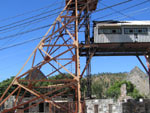 The Best Kept Secret in Mexico The Best Kept Secret in Mexico
Bob Moriarty
Archives
December 1, 2005
I recently
came back from a three day trip to the best kept secret in Mexico.
I also took a look at a billion ounce silver mine.
The most popular
business model in the gold/silver juniors is that of raising
some seed money, picking up a property or two, do some drilling
and surface exploration until you run out of money, raise money,
drill holes: All in the hope of someone coming along one day
and buying the company out at great profit to the investors.
Unfortunately, it only makes profit for the insiders and those
raising capital for the company. When is the last time you heard
of a junior being bought out for any reason? It's pretty much
a variation of the greater fool theory so common among home buyers
at present. Surely there must be a greater fool than me.
Barbara
and I used to run a small computer company selling CPU upgrades
for Macintosh computers. We were good at it and made money. Actually
we used to outsell MacMall and MacConnection by a bunch so you
could safely say we were real good at it.
When we
began selling these CPU upgrades on the web, the web was still
taking baby steps. Our closest direct competitor was Cyberian
Outpost in CT. When we were doing $3 million in sales and clearing
a nice fat profit, they were doing $21 million in sales and losing
$7 million. This was in the days of the dotcom magic. Cyberian
went public and soon had a market cap of $500 million. I did
some math and if my numbers were right, our little two man (sorta)
company should have been worth about $71 million. Except for
the minor fact that they were losing money hand over fist and
we were making money. I told Barbara about our new found wealth
and she told me I was daft.
As long
as we ran the company, we made money. That seemed to make sense
to me. As long as Cyberian Outpost existed, they lost money.
Eventually they went teats up and destroyed $500 million dollars
of shareholder value. But we weren't much better off, Steve Jobs
hates the idea of anyone making money off of Apple computers
so he killed the CPU business. We kept going until we couldn't
make a reasonable profit and then we simply shut down and went
on our way. We had a good business model but it didn't call for
us to lose money.
When you invest
in a junior, you are not only getting into bed with the company,
you are getting into bed with their business model. Make sure
that (1) you understand how they intend for you to make money
and (2) it makes sense. As far as I am concerned I get very nervous
when a junior doesn't have a plan for making a profit somehow,
someday. That makes me fairly unusual, the standard business
model accepted by almost everyone is to drill and spend and pray
until you have a zillion shares, then do a rollback and start
over. Make sure that at least in theory you have some way of
possibly making money some day. If you don't, you won't.
The Best Kept Secret
in Mexico
In early November
I went to Mexico to visit a new property of Great Panther
Resources in a town called Guanajuato. Located in Central
Mexico at an elevation of about 6,000 feet, it is hot during
the day and chilly at night. Designated a UN World Heritage Zone
in 1988 because of its ancient buildings and deep sense of history,
it attracts visitors from all over the world. The city is the
best kept secret in Mexico, it's so beautiful and still pretty
much off the beaten path.
Guanajuato
is Mexico's foremost mining state. In the south fertile plains
support a variety of livestock and the cultivation of corn, wheat
and beans.
The Spanish
first visited the area around 1541. By 1546 the Viceroy of New
Spain granted Don Rodrigo de Vazquez a license for a cattle ranch
in return for his services to the King of Spain. Two short years
later. in 1548, a mule driver with the name of Juan Rayas changed
the course of history by discovering the richest silver vein
in history. Rayas was driving a team of mules on his way to the
newly discovered ore deposits at Zacatecas when he stopped over
night near the Cerro del Cubilete in Guanajuato. The next day
he found streaks of melted silver in the rocks surrounding his
camp fire and the rush was on.
The primary
silver structure is called the Veta Madre vein and it extends
an incredible 25 kilometers. At one point, the richest mine in
the district: the La Valenciana, still in production today, produced
over one third of the silver in the world. It was said that Count
of Valenciana, Antonio Obregon y Alcocer, was the second richest
man in the world. Second only to the king of Spain. Over the
course of 450 years, the mines of Guanajuato have produced somewhere
between 1.2 and 1.5 billion ounces of silver.
The Best Kept Secret
in Guanajuato
In 1939, after
much labor unrest, a number of the mines were turned over to
the Cooperativa Santa Fe de Guanajuato. And it was all downhill
from there. I don't think much of governments, history books
are filled with tales of the stupidity and blunders committed
by those in government. It seems to me governments can't do much
right. Cooperatives may as well be the same thing, they are true
democracy at work; mob rule.
In 1939 the
cooperative took over the richest 4.2 kilometers of silver in
Mexico. It only took them 65 years to run it into the ground.
The mangers should be complemented, all of the other similar
cooperatives in Mexico failed long before the Cooperativa Sante
Fe de Guanajuato. But when you run a mine based on a democracy,
it can only come to a bad end. Everyone wants to vote benefits
to themselves and their friends. By August of this year, it got
so bad the government turned off the power and they were forced
to mine by hand, the same way as they did 450 years ago.
Bob Archer
of Great Panther had his ear to the ground and when he heard
about the power being turned off, he hustled his way down to
Guanajuato. While it may not seem fair to qualify the sale as
outright theft on the part of Great Panther, it's close. While
everyone else in the business was snoozing or out at the airport,
Bob realized his ship had come to port. The cooperative didn't
want to sell, they had to sell. Each day made the apparent value
of the mines lower. Archer came in with a rock bottom price of
US $7.2 million, most of which is going to pay pension obligations
of the cooperative.
The purchase
price includes 1107 hectares in the two main properties, a 1,200
ton per day mill, workshops and administration facilities and
all the mining equipment. They own 4.2 kilometers, the richest
4.2 kilometers of the Veta Madre vein, most of which has been
barely explored.
click
on image to see the various blocks

Great Panther
has paid $1.45 million already and has 13 months to pay off the
remaining $5.8 million. They do have to stretch but after all,
they own a barely explored series of mines with 25 shafts, 4
winzes (internal shafts) with a past production of about a billion
ounces of silver.
When I visited
in early November Great Panther had barely closed the deal. Even
in the midst of the richest silver district in Mexico it was
possible to hear the gnashing of teeth from all the other Mexican
silver companies who missed the boat.
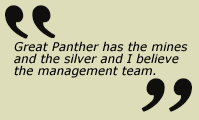 There
is a meaningless 43-101 resource but I won't even go into it.
When you are looking at a project of this size, you have to look
at the past production and try to guess just how much they took
out in a percentage. Believe me, the past production isn't much
compared to what is left. Let it be said that Great Panther really
doesn't have to explore for silver, you don't explore this kind
of deposit. When you are exploring, you are guessing. At Guanajuato
they don't have to guess, all they have to do is locate. And
just looking at the side view of past production shows a lot
of gaping holes where no one has ever put a drill. So Great Panther
isn't exploring, they are just locating the silver they already
know is there. There
is a meaningless 43-101 resource but I won't even go into it.
When you are looking at a project of this size, you have to look
at the past production and try to guess just how much they took
out in a percentage. Believe me, the past production isn't much
compared to what is left. Let it be said that Great Panther really
doesn't have to explore for silver, you don't explore this kind
of deposit. When you are exploring, you are guessing. At Guanajuato
they don't have to guess, all they have to do is locate. And
just looking at the side view of past production shows a lot
of gaping holes where no one has ever put a drill. So Great Panther
isn't exploring, they are just locating the silver they already
know is there.
Actually buying
a 1,200 ton per day mill for $7.25 million wouldn't be all that
bad of a deal all by itself but this mill was the saddest mill
I have ever seen. The cooperative didn't do a lick of maintenance
or upgrading. 90% of the mill would make better scrap iron than
a mill. But there isn't an issue with Great Panther, Bob Archer
knows half his job is rationalizing the mine and mill, not finding
silver. He has a giant resource, it's up to him to make it make
some sort of sense. I suggested to him that he could pretty much
make it anything he wanted to make it. He could try to optimize
a mill to match the production capability.
The lack of
maintenance was so bad that when we went down to the 300 foot
level in a truck, the clutch was so worn out that we almost had
to walk back to surface. Bob Archer tells a story about how he
saw a pile of beat up iron balls next to the one working ball
mill and he asked what they were doing there. He was told that
they were too out of shape and worn to be used so the miners
used block of granite to replace them. So as they were crushing
the ore, they were also diluting it. By the time the mine was
closed in August, the miners were being forced to carry 50 kilo
sacks of hand-picked ore to the surface. It was a sad tale.
click
on images for large photos
Bob already has a drill rig hard at work.
We viewed some of the core from the current hole, the mineralization
is easy to see and he has located an entirely new section of
the vein. I would be very interested in learning his cost of
locating new ounces. I've always felt the Vancouver brokers get
carried away with 43-101 ounces but his cost of locating ounces
should be among the lowest in the industry. With companies around
like Silver Standard getting $.90 an ounce for ounces in the
ground with no mines or mills, Great Panther is going to get
a hell of a premium for their ounces, these are real ounces of
silver which are going to be produced, not hatched some day.
Endeavour Silver began this
model of buying assets cheap and adding ounces of silver to increase
shareholder value. I really like the model and Brad Cooke deserves
full credit for being the early riser. And in my visits to Fortuna
in Peru and now Great Panther in Guanajuato, I've seen the model
expanded and increased. In my view, the entire silver industry
is due for a major shakeup and shakeout. I cannot understand
the absurd valuations of the few silver companies around. I like
Pan American, they have good mines and great management. I cannot
understand Coeur D'Alene, what makes the CEO worth $880,000 a
year when profit is as rare as hen's teeth. And just how long
does Silver Standard intend to play the "sit on silver until
it hatches" trick? Their model made some sense at $3.50
silver but times change and for all their puffed up egos, prices
change, too. It's time for those silver companies who want to
think of themselves as leaders to start leading.
While I was
in Mexico I didn't have time to visit Great Panther's Topia property
but details can be found on their
website. They intend mining some high grade ore and it seems
their goal is to produce about 1.5 million ounces of silver a
year at a cost of about $3. Their deal there brought with it
a 200 TPD mill and they are in the process of reconditioning
it at this time as they conduct exploration drilling.
We have been owners of Great Panther shares for almost 2 years.
I bought into their story a long time ago when it was just a
great idea. Well, they have the goods now and are going to be
competing to get into the top five silver producers. They have
the mines and the silver and I believe the management team. The
market is not giving them any credit for the ounces which they
obviously have. The entire market cap of Great Panther is under
$20 million Canadian and that isn't going to last long. They
have a lot of silver, should be one of the lowest cost producers
in the business and will be producing in 2006. Look for them
to be leading the pack in under three years.
Great Panther is an advertiser. They have not paid for this article
and it is my opinion and only my opinion. As always, we want
to remind investors they are responsible for their own investment
decisions. I do own shares. I am biased.
Great Panther
Resources, Ltd
GPR-V $.62 Canadian 35 million shares outstanding.
Great Panther website.
Bob Moriarty
President: 321gold
Archives
321gold Inc

|
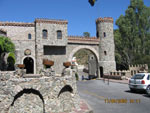
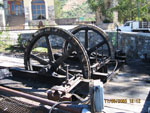
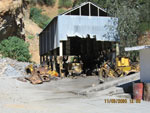
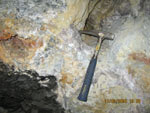
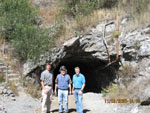
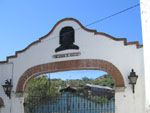
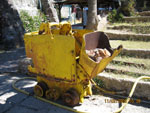
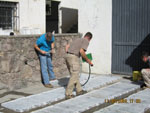



 There
is a meaningless 43-101 resource but I won't even go into it.
When you are looking at a project of this size, you have to look
at the past production and try to guess just how much they took
out in a percentage. Believe me, the past production isn't much
compared to what is left. Let it be said that Great Panther really
doesn't have to explore for silver, you don't explore this kind
of deposit. When you are exploring, you are guessing. At Guanajuato
they don't have to guess, all they have to do is locate. And
just looking at the side view of past production shows a lot
of gaping holes where no one has ever put a drill. So Great Panther
isn't exploring, they are just locating the silver they already
know is there.
There
is a meaningless 43-101 resource but I won't even go into it.
When you are looking at a project of this size, you have to look
at the past production and try to guess just how much they took
out in a percentage. Believe me, the past production isn't much
compared to what is left. Let it be said that Great Panther really
doesn't have to explore for silver, you don't explore this kind
of deposit. When you are exploring, you are guessing. At Guanajuato
they don't have to guess, all they have to do is locate. And
just looking at the side view of past production shows a lot
of gaping holes where no one has ever put a drill. So Great Panther
isn't exploring, they are just locating the silver they already
know is there.